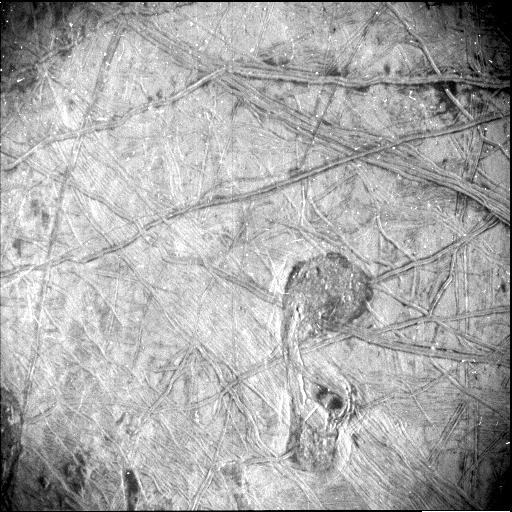
Juno’s Star Camera Sees Europa Close-Up
Taken by NASA's Juno spacecraft, this black-and-white photo of the surface of Jupiter's icy moon Europa reveals a curious feature – shaped somewhat like the musical symbol for a quarter note – surrounded by a vast network of linear ridges and dark blotches. It was obtained by Juno's Stellar Reference Unit (SRU) during the spacecraft's Sept. 29, 2022, flyby of Europa. The image shows a region crisscrossed with a network of fine grooves and sets of complicated double ridges (pairs of long parallel lines indicating elevated features in the ice). In the upper right corner are dark stains possibly linked to seepage or the bubbling up of liquid from beneath the ice. Just below center and to the right is the surface feature that takes a form like a musical quarter note. The feature measures 42 miles (67 kilometers) north-south and 23 miles (37 kilometers) east-west. The white dots in the image are signatures of penetrating high energy particles from the severe radiation environment around the moon. The image was taken at a distance of about 256 miles (412 kilometers) over the darkened hemisphere of Europa. It covers about 93 miles (150 kilometers) by 125 miles (200 kilometers) of the moon's surface. The SRU is designed to provide images of starfields used for attitude determination. The camera, designed for low-light conditions, has proved itself a valuable science tool, discovering shallow lightning in Jupiter's atmosphere, imaging Jupiter's enigmatic ring system, and now providing a glimpse of Europa's most fascinating geologic formations.
- X



























